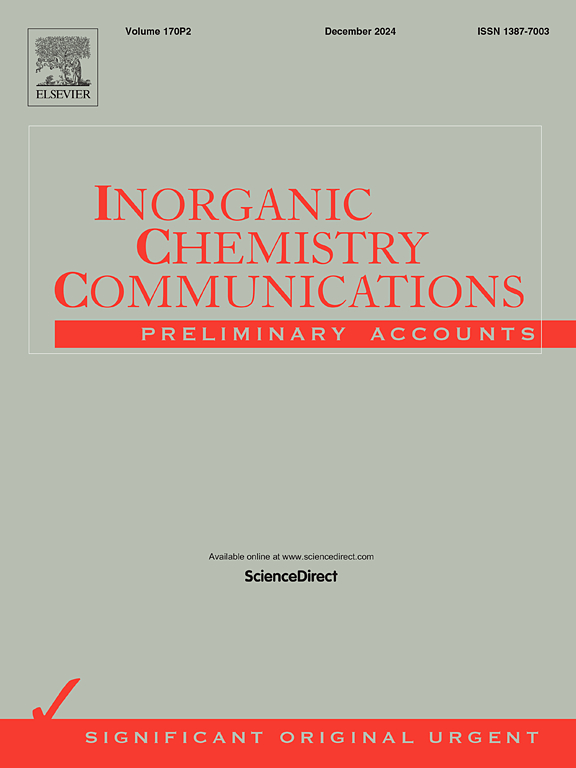Synergistic effect of Cu and Ag on porous (Cu, Ag) co-doped CeO2 nanosheets for low-temperature CO oxidation
IF 4.4
3区 化学
Q1 CHEMISTRY, INORGANIC & NUCLEAR
引用次数: 0
Abstract
CeO2 with porous nanosheet structure was prepared by changing the calcination environment. The prepared CeO2 nanosheets had high specific surface area and porosity, which was suitable for supporting other active components. By the same synthesis conditions, a small amount of Cu and Ag was introduced into the synthesis system of CeO2 nanosheets respectively. The introduction of Cu or Ag did not significantly change the morphology of the prepared CeO2 nanosheets, but it notably improved the catalytic activity for CO oxidation. Therefore, considering the significant improvement of catalytic performance caused by the single doping of Cu or Ag, (Cu, Ag) were co-doped into the CeO2 system. The analysis of physical structure (XRD, BET, SEM and TEM) and surface chemical properties (XPS, Raman and H2-TPR) showed that the (Cu, Ag) co-doping not only improved the dispersion of Cu and Ag species on the catalyst surface, but also increased the Ag0 and oxygen vacancies on the catalyst surface. The smaller Ag0 crystallite size and the abundant oxygen vacancies made the catalyst easier to activate O2 at low temperature, so the activity of the catalyst at low temperature was significantly enhanced compared to the CeO2 singly doped with Cu or Ag. At the same time, the high dispersion of Cu-Ag species was conducive to electron transfer between Cu-Ag species and CeO2 support.

求助全文
约1分钟内获得全文
求助全文
来源期刊

Inorganic Chemistry Communications
化学-无机化学与核化学
CiteScore
5.50
自引率
7.90%
发文量
1013
审稿时长
53 days
期刊介绍:
Launched in January 1998, Inorganic Chemistry Communications is an international journal dedicated to the rapid publication of short communications in the major areas of inorganic, organometallic and supramolecular chemistry. Topics include synthetic and reaction chemistry, kinetics and mechanisms of reactions, bioinorganic chemistry, photochemistry and the use of metal and organometallic compounds in stoichiometric and catalytic synthesis or organic compounds.
 求助内容:
求助内容: 应助结果提醒方式:
应助结果提醒方式:


